#Imperial Austro-Hungarian Army
Explore tagged Tumblr posts
Text

Predominantly Polish troops of the Austro-Hungarian Army fire on Imperial Russian forces entrenched on the Pustki hill in the Carpathian Mountains. Photo dated May, 1915.
24 notes
·
View notes
Photo

The Great Turkish War or War of the Holy League (1683-1699) and its aftermath
« Atlas des guerres – Époque moderne », Autrement, 2023
by cartesdhistoire
In 1682, the Austro-Turkish war became inevitable: faced with collusion between Louis XIV, the Turks, and Hungarian revolts led by Thököly, an Austro-Polish alliance was formed.
150,000 Turks marched towards Hungary to besiege Vienna, reaching it on July 14. Polish leader Sobieski, arriving in September, imposed his strategy on a coalition army of 75,000 men: crossing the Danube and taking positions on the heights of Kahlenberg. The charge of Polish hussars on September 12 was thunderous, pushing all the way to the fleeing Grand Vizier's camp. Turkish losses were heavy, Vienna was liberated, Ottoman progress was disrupted, and the campaign ended with several more Polish victories.
The formation of the Holy League (with Venice in 1684 and Russia in 1686) allowed the resumption of the offensive by the imperialists: Pest was captured (October 1684), Buda as well, but with difficulty (September 1686), opening the road to Belgrade despite a Turkish counteroffensive resulting in the defeat of Mohacs (1687). Hungarian cities were conquered one by one, Transylvania came under Habsburg sovereignty, but the War of the Augsburg League diverted the imperial troops. A border was drawn on the Danube while Eugene of Savoy, fighting alongside the Imperials, won the Battle of Zenta in 1697. Peace was signed in 1699 (Treaty of Karlowitz): Hungary, Transylvania, and the Banat of Temesvar came under Habsburg domination; Podolia returned to Poland and Azov to the Russians.
The expansion of the Habsburgs continued thanks to their engagement on the side of Venice (Veneto-Ottoman war of 1714-1718). The victories of Eugene de Savoy (Petervarden in 1716, siege of Belgrade in 1717) marked the maximum expansion of the Habsburgs with the Treaty of Passarowitz in 1718 (some territories were returned after the Austro-Turkish War of 1737-1739, with the Treaty of Belgrade).
39 notes
·
View notes
Text
Causes of World War I in Europe The Causes of Conflict
Causes World War I, In Europe often referred to as the Great War, was a cataclysmic battle that reshaped the globe from 1914 to 1918. Its reasons were complex and multifaceted, stemming from a tangled net of nationalism, imperialism, militarism, and a series of alliances amongst European powers. The war resulted in unheard of stages of destruction and loss of lifestyles, essentially altering the political landscape and placing the degree for future conflicts.

Causes of the War
The roots of World War I may be traced again to the overdue nineteenth and early twentieth centuries, a time while European countries were fiercely competing for colonies and affect. The upward push of nationalism fueled dreams for independence among ethnic agencies, specifically in the Balkans, where Slavic nationalism turned into a mighty pressure. This region, frequently referred to as the "powder keg of Europe," became a flashpoint for tensions between the Austro-Hungarian Empire and Serbia, which sought to unite Slavic peoples.
Militarism also played a tremendous role inside the lead-up to the war. European international locations constructed up their army forces and advanced large plans for mobilization. The fingers race, mainly between Germany and Great Britain, created a climate of fear and suspicion. The Schlieffen Plan, Germany's strategy for a two-the front battle towards France and Russia, exemplified the militaristic mindset and the notion that quick, decisive movement ought to save you prolonged battle.
The tangled alliances of the time—which includes the Triple Entente among France, Russia, and Britain and the Triple Alliance of Germany, Austria-Hungary, and Italy—supposed that any localized conflict should hastily expand right into a broader struggle. This turned into illustrated whilst Archduke Franz Ferdinand of Austria-Hungary become assassinated by a Bosnian Serb nationalist in June 1914, setting off a sequence response of mobilizations and declarations of warfare.
The War Begins
On July 28, 1914, Austria-Hungary declared struggle on Serbia, invoking the alliance systems that speedy pulled in other international locations. Russia mobilized in protection of Serbia, leading Germany to declare warfare on Russia. This turned into followed via declarations towards France and Belgium, drawing the British into the battle. By August 1914, lots of Europe changed into embroiled in struggle.
The initial section of the battle changed into characterized by way of movement and optimism. The German forces performed the Schlieffen Plan, advancing thru Belgium into France. However, the predicted brief victory changed into a stalemate as each sides dug in for trench warfare. The First Battle of the Marne in September 1914 halted the German strengthen and marked the beginning of a brutal and protracted conflict.
Life inside the Trenches
The trench struggle that ruled World War I became a terrible revel in for soldiers. Trenches stretched for miles, with opposing forces often just yards aside. Conditions had been appalling; soldiers faced dust, vermin, and a lack of sanitation. The mental toll was huge, with many guys laid low with what turned into then called "shell shock," now diagnosed as PTSD.
Combatants fought through a chain of bloody battles, which include Verdun and the Somme, where casualties had been spectacular. The Battle of the Somme, initiated in July 1916, aimed to alleviate strain at the French at Verdun and worried the primary use of tanks at the battlefield. Despite the creation of recent generation, the conflict remained mired in attrition, with neither side capable of stable a decisive victory.
Technological Innovations
It is noticed enormous technological advancements that modified the character of struggle. The use of machine guns, artillery, and poison gas delivered to the lethality of the battlefield. The creation of aircraft for reconnaissance and later bombing missions additionally marked a new generation in military strategy. Submarines and naval war, specially the German U-boat campaign, further complex the warfare, as blockades and unrestricted submarine struggle affected deliver lines and civilian delivery.
The war additionally fostered improvements in remedy and remedy for wounded infantrymen. The development of blood transfusions, advancements in surgical techniques, and the established order of prepared ambulance offerings stored endless lives, albeit at a super human fee.
The Home Front
The effect of the warfare prolonged far beyond the battlefield. Governments mobilized whole populations, instituting rationing and inspiring girls to join the body of workers as guys went off to fight. Women took on roles historically held by way of men, running in munitions factories, serving as nurses, and contributing to the conflict effort in numerous capacities. This shift commenced to task conventional gender roles and could have lasting implications for society.
Propaganda have become a effective device for governments, shaping public perception of the war and retaining morale. Nations painted the war as a war among proper and evil, using emotional appeals to rally support. Censorship also performed a critical function, with governments controlling the glide of statistics to prevent dissent and preserve solidarity.
The War Ends
The conflict dragged on for 4 long years, leading to immense suffering and disillusionment. By 1917, with growing casualties and monetary stress, public sentiment commenced to shift. The Russian Revolution that year noticed the Bolsheviks take power, leading to Russia's withdrawal from the conflict and a peace treaty with Germany in 1918.
The entry of the US into the battle in April 1917 provided a tremendous boost to the Allied powers. American troops, clean and enthusiastic, helped flip the tide towards the exhausted Central Powers. By late 1918, the war-weary countries sought an end to hostilities. On November 11, 1918, an armistice changed into signed, bringing the combating to a halt.
Aftermath and Legacy
Life in the trenches during World War I the Treaty of Versailles in 1919 formally ended the struggle and imposed heavy reparations on Germany, leading to economic worry and political instability. The redrawing of borders in Europe and the crumble of empires—the Austro-Hungarian, Ottoman, German, and Russian—created new international locations and sowed the seeds for future conflicts.

It is left an indelible mark on the 20th century, influencing artwork, literature, and political concept. The battle’s legacy is a haunting reminder of the cost of battle and the fragility of peace. As historians continue to investigate its reasons and results, World War I stays a pivotal second in human records, shaping the direction of the cutting-edge international.
3 notes
·
View notes
Text
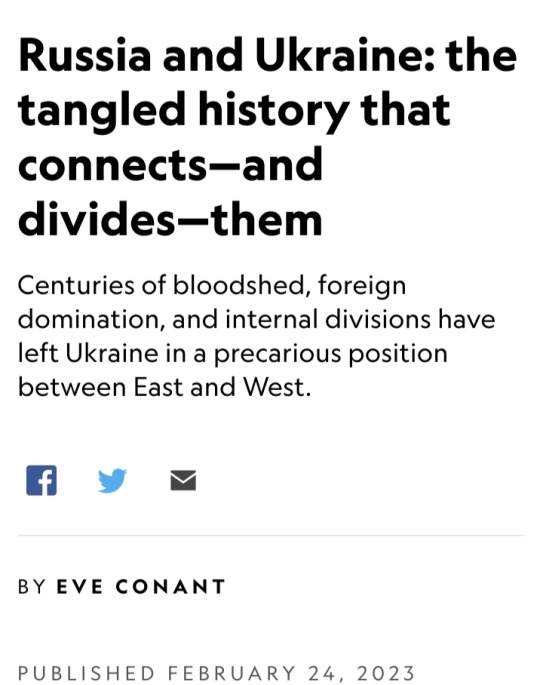
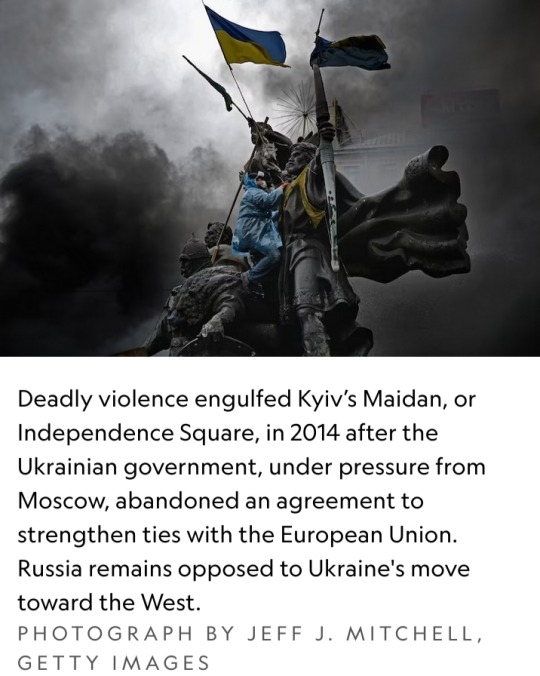
It’s been a year since Russia invaded Ukraine, and the battle continues.
Military and civilian deaths and injuries on both sides have been estimated in the hundreds of thousands, and millions more Ukrainians have been displaced.
What set the stage for today’s conflict? Here’s a look back at the long, intertwined history of the contentious neighbors.
The two countries’ shared heritage goes back more than a thousand years to a time when Kyiv, now Ukraine’s capital, was at the center of the first Slavic state, Kyivan Rus, the birthplace of both Ukraine and Russia.
In A.D. 988, Volodymyr the Great, the pagan prince of Novgorod and grand prince of Kyiv, accepted the Orthodox Christian faith and was baptized in the Crimean city of Chersonesus.
From that moment on, Russian leader Vladimir Putin recently declared, “Russians and Ukrainians are one people, a single whole.”
Yet, over the past ten centuries, Ukraine has repeatedly been carved up by competing powers.
Mongol warriors from the east conquered Kyivan Rus in the 13th century.
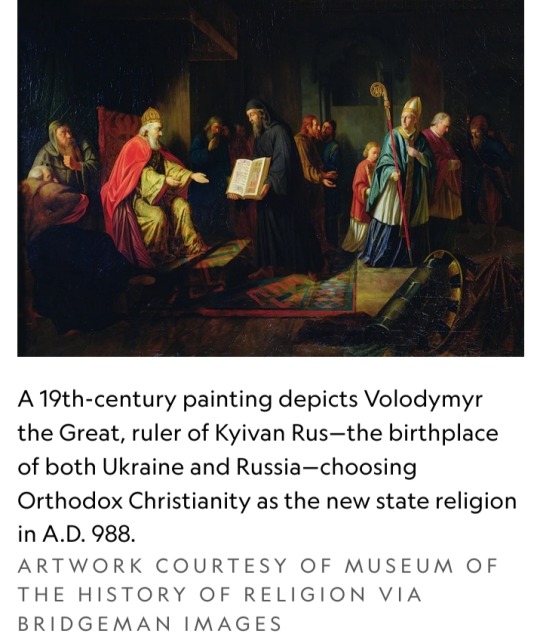
In the 16th century, Polish and Lithuanian armies invaded from the west.
In the 17th century, war between the Polish-Lithuanian Commonwealth and the Tsardom of Russia brought lands to the east of the Dnieper River under Russian imperial control.
The east became known as "Left Bank" Ukraine; lands to the west of the Dnieper, or "Right Bank," were ruled by Poland.
More than a century later, in 1793, right bank (western) Ukraine was annexed by the Russian Empire.
Over the years that followed, a policy known as Russification banned the use and study of the Ukrainian language, and people were pressured to convert to the Russian Orthodox faith.
Ukraine suffered some of its greatest traumas during the 20th century.
After the communist revolution of 1917, Ukraine was one of the many countries to fight a brutal civil war before being fully absorbed into the Soviet Union in 1922.
In the early 1930s, to force peasants to join collective farms, Soviet leader Joseph Stalin orchestrated a famine that resulted in the starvation and death of millions of Ukrainians.
Afterward, Stalin imported large numbers of Russians and other Soviet citizens—many with no ability to speak Ukrainian and with few ties to the region—to help repopulate the east.
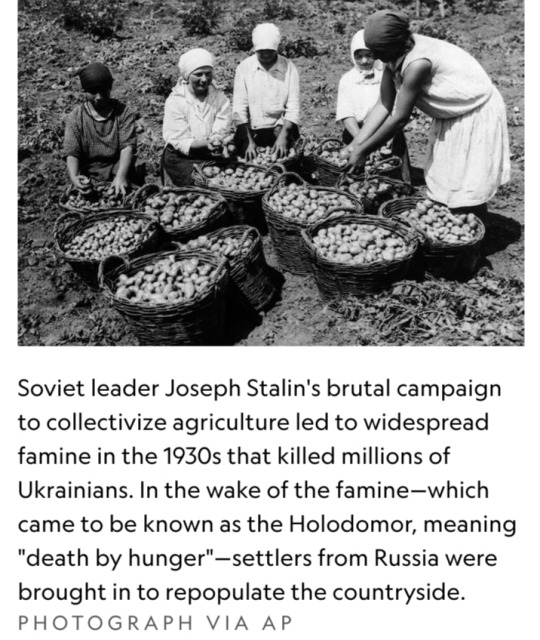
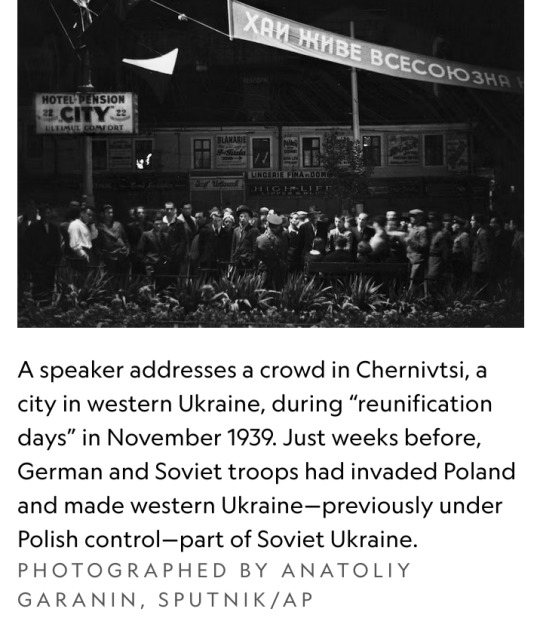

These legacies of history created lasting fault lines. Because Eastern Ukraine came under Russian rule much earlier than western Ukraine, people in the east have stronger ties to Russia and have been more likely to support Russian-leaning leaders.
Western Ukraine, by contrast, spent centuries under the shifting control of European powers such as Poland and the Austro-Hungarian Empire — one reason Ukrainians in the west have tended to support more Western-leaning politicians.
The eastern population tends to be more Russian-speaking and Orthodox, while parts of the west are more Ukrainian-speaking and Catholic.
With the collapse of the Soviet Union in 1991, Ukraine became an independent nation. But uniting the country proved a difficult task.
For one, “the sense of Ukrainian nationalism is not as deep in the east as it is in west,” says former ambassador to Ukraine Steven Pifer.
The transition to democracy and capitalism was painful and chaotic. Many Ukrainians, especially in the east, longed for the relative stability of earlier eras.

"The biggest divide after all these factors is between those who view the Russian imperial and Soviet rule more sympathetically versus those who see them as a tragedy," says Adrian Karatnycky, a Ukraine expert and former fellow at the Atlantic Council of the United States.
These fissures were laid bare during the 2004 Orange Revolution in which thousands of Ukrainians marched to support greater integration with Europe.
On ecological maps, you can even see the divide between the southern and eastern parts of Ukraine—known as the steppes—with their fertile farming soil and the northern and western regions, which are more forested, says Serhii Plokhii, a history professor at Harvard and director of its Ukrainian Research Institute.
He says a map depicting the demarcations between the steppe and the forest, a diagonal line between east and west, bears a "striking resemblance" to political maps of Ukrainian presidential elections in 2004 and 2010.
Crimea was occupied and annexed by Russia in 2014, followed shortly after by a separatist uprising in the eastern Ukrainian region of Donbas that resulted in the declaration of the Russian-backed People’s Republics of Luhansk and Donetsk.
Today, the two countries find themselves in conflict yet again, fault lines that reflect the region's tumultuous history.

Portions of this article were originally published during the 2014 Crimean crisis. It has been updated to reflect current events.
#Ukraine#Russia#Kyiv#Kyivan Rus#Volodymyr the Great#Vladimir Putin#Russification#Joseph Stalin#2004 Orange Revolution#Volodymyr Oleksandrovych Zelenskyy#Volodymyr Zelenskyy
41 notes
·
View notes
Text


Lieutenant's Attila of the Honvéd Hussars from the Austro-Hungarian Empire dated to the Early 20th Century on display at the Heeresgeschichtliches Museum in Vienna, Austria
Honvéd, meaning "Defender of the Homeland" in Hungarian were the land forces of Hungary in the Austro-Hungarian Empire. Initially the the Honvéd were disbanded and distrusted by the Austrian Empire due to many joining the revolutionaries during the 1848 Revolutions. However with the establishment of the Austro-Hungarian Empire in 1867 it was restored. More so the Honvéd was controlled by the Hungarian Government and could only join the Imperial Army under their orders. However the Emperor was still the supreme warlord and commander in chief of the armed forces.
Photographs taken by myself 2022
#uniform#cavalry#20th century#austro-hungarian empire#hungary#hungarian#fashion#art#hapsburgs#military history#heeresgeschichtliches museum#vienna#barbucomedie
7 notes
·
View notes
Text
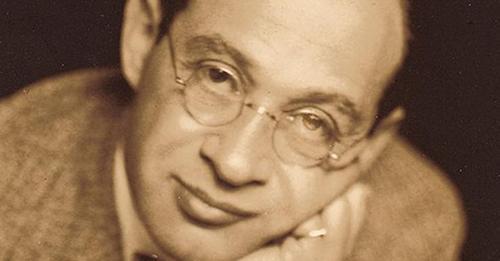

The Comedian of Dachau Mocked the Nazis
Fritz Grünbaum was an Austrian-Jewish comedian, singer and cabaret star who never stopped cracking jokes, even after being deported to a concentration camp.
Born in 1880, Fritz attended law school in Vienna. After graduating, instead of practicing law, Fritz pursued his dream of being an entertainer. He wrote his first operetta in 1903, and in 1906 began a longtime gig as the master of ceremonies at Cabaret Die Hoelle in Vienna. Fritz told funny stories, sang songs, and made sure everyone had a great time every night.
In 1910, an Austro-Hungarian imperial army officer in the cabaret audience started heckling Fritz with anti-Semitic insults. Fritz left the stage, went over to the officer’s table, and slapped him, then calmly returned to the stage. The officer challenged Fritz to a duel. The two men fought and Fritz was injured.
Fritz joined the army in 1914 and fought for Austria-Hungary in World War I. After the war, he resumed his successful show business career, commuting between Vienna and Berlin. In Berlin, Fritz acted in movies and recorded pop songs. In Vienna, he was co-founder and master of ceremonies of the legendary cabaret Simpl.
After Hitler’s rise to power in the 1930’s, Fritz was no longer allowed to perform in Germany. He relocated full time to Vienna, where he used his nightclub act to relentlessly skewer the Nazi party. In 1938, he walked out onto a darkened stage and flailed around, crying, “I see nothing, absolutely nothing! I must have wandered into National Socialist culture.” The next day Fritz was banned from performing in Austria.
Germany invaded Austria, and Fritz and his wife tried to escape the country but were caught at the border and deported to labor camps. Fritz was later sent to Dachau, but he never stopped entertaining people. At Dachau, he mocked the Nazis and found levity in the grim absurdities of life in a death camp. One former inmate remembered Fritz comforting the other inmates “by arguing that absolute deprivation and systematic starvation were the best defenses against diabetes.”
Before his deportation, Fritz had been a well-known art collector specializing in Austrian modernist art. He had a large collection of works by Egon Schiele. After Fritz was deported, his prized art collection was looted by the Nazis. A fourth of the collection appeared in the 1950’s through a Swiss art dealer. The fate of the other ¾ of Fritz’ collection remains unknown.
Fritz’ last performance was on New Year’s Eve 1940 in Dachau. He was desperately ill with tuberculosis, but summoned the strength to perform a comedy and musical act for his fellow inmates, most of whom were dying. One of the prisoners was excited when he recognized Fritz from his performances in Vienna. Fritz said, “I beg of you, Fritz Grünbaum is not performing for you, but instead it is the number [he recited his camp number], who just wants to spread a little happiness on the last day of the year.” Fritz died two weeks later.
May his memory always be for a blessing, and may his missing art collection return to his family.
Source
Dead Fred's Genealogy Photo Archive
33 notes
·
View notes
Text
In understand the appeal of 1973’s Goncharov, but I wonder why we don’t apply such passion to restoring or researching lost literature.
For example, why doesn’t more of the science-fiction fandom (particularly the Horus Heresy, 40k fandom) appreciate the surviving passages of the 1937 pre-atomic/pulp sci-fi classic “Stars Asunder?”
Here we have the makings of a truly amazing science-fiction classic, a foundation for Grim-Dark (but with hope, of course, being a core element, the promise that the darkness may yet fade), and a plethora of characters and plot points whose complexity lay the groundwork for everything from “Do Androids Dream of Electric Sheep,” to “Flight of the Eisenstein,” with hints of “Space 1889.”
And yet, it is virtually unknown. Writer and Austro-Hungarian Army veteran August Richter (perhaps inspired by the collapse of the ‘immortal’ empire where he spent his formative years) moves to the UK in 1924 and spends the next twelve years writing a book so large the intent was a trilogy, makes copius notes, and on the eve of his death as a volunteer in the International Brigade writes one of the most powerful introductions to science-fiction one might ever encounter: and all from the pen of a Hungarian boy turned Oxford graduate who spent a good many of his adult years in trenches.
The man literally wrote the template for life in the Imperial Guard. He introduced the concept of the -flawed- attempt to create a genetically perfect soldier (a stark criticism of Nazism) and the masochistic tendency to outlaw religion for fear of gods.
Nobody seems to care, not in the mainstream.
Is it because, as Frank Herbert argued, Richter’a family neglected to publish the remaining manuscripts, subsequently forgotten during the war? I suspect there is a great deal more to the story, and tend to agree with Fincham’s (1982) assessment the wounds of two world wars were perhaps too raw, the Mid-Century too interested in clean and easy plot resolution, to push it.
I don’t know, but certainly if we are discussing lost classics of the twentieth century (one meant at one point for film, no less), we can’t forget this one again!
#goncharov#stars asunder#August Richter#science fiction#lost literature#pulp#dieselpunk#gothic science fiction#pre-atomic#malal#askmalal#malice
21 notes
·
View notes
Note
You had said that the Mongolians had the worst army in WWII. Who had the worst army in WWI?
I didn't say the Mongolians, I said the Mengjiang National Army, which was the army of the aforementioned Mengjiang, a puppet state of the Empire of Manchuria, which was itself a puppet state of Imperial Japan.
I would say the worst-performing major army was Austria-Hungary, which had few successes. Romania was mostly a footnote on the Eastern Front. They were poorly-equipped and trained, but they did make a decent enough showing that I'd be more comfortable with saying that the Austro-Hungarians were worse.
Thanks for the question, Anon.
SomethingLikeALawyer, Hand of the King
14 notes
·
View notes
Text
Events 11.1 (1900-1950)
1905 – Lahti, the city of Finland, is granted city rights by Tsar Nicholas II of Russia, the last Grand Duke of Finland. 1911 – World's first combat aerial bombing mission takes place in Libya during the Italo-Turkish War. Second Lieutenant Giulio Gavotti of Italy drops several small bombs. 1914 – World War I: The first British Royal Navy defeat of the war with Germany, the Battle of Coronel, is fought off of the western coast of Chile, in the Pacific, with the loss of HMS Good Hope and HMS Monmouth. 1914 – World War I: The Australian Imperial Force (AIF) departed by ship in a single convoy from Albany, Western Australia bound for Egypt. 1916 – In Russia, Pavel Milyukov delivers in the State Duma the famous "stupidity or treason" speech, precipitating the downfall of the government of Boris Stürmer. 1918 – World War I: With a brave action carried out into the waters of the Austro-Hungarian port of Pula, two officers of the Italian Regia Marina sink with a manned torpedo the enemy battleship SMS Viribus Unitis. 1918 – Malbone Street Wreck: The worst rapid transit accident in US history occurs under the intersection of Malbone Street and Flatbush Avenue, Brooklyn, New York City, with at least 102 deaths. 1918 – Western Ukraine separates from Austria-Hungary. 1922 – Abolition of the Ottoman sultanate: The last sultan of the Ottoman Empire, Mehmed VI, abdicates. 1923 – The Finnish airline Aero O/Y (now Finnair) is founded. 1928 – The Law on the Adoption and Implementation of the Turkish Alphabet, replaces the Arabic alphabet with the Latin alphabet. 1937 – Stalinists execute Pastor Paul Hamberg and seven members of Azerbaijan's Lutheran community. 1938 – Seabiscuit defeats War Admiral in an upset victory during a match race deemed "the match of the century" in horse racing. 1941 – American photographer Ansel Adams takes a picture of a moonrise over the town of Hernandez, New Mexico that would become one of the most famous images in the history of photography. 1942 – World War II: Matanikau Offensive begins during the Guadalcanal Campaign and ends three days later with an American victory. 1943 – World War II: The 3rd Marine Division, United States Marines, landing on Bougainville in the Solomon Islands, secures a beachhead, leading that night to a naval clash at the Battle of Empress Augusta Bay. 1944 – World War II: Units of the British Army land at Walcheren. 1945 – The official North Korean newspaper, Rodong Sinmun, is first published under the name Chongro. 1948 – Athenagoras I, Ecumenical Patriarch of Constantinople, is enthroned. 1949 – All 55 people on board Eastern Air Lines Flight 537 are killed when the Douglas DC-4 operating the flight collides in mid-air with a Bolivian Air Force Lockheed P-38 Lightning aircraft over Alexandria, Virginia.
0 notes
Text

People fought for independence of Crete a century ago, the large island in the Mediterranean known as a cradle of ancient Eurasian Civilizations, where was home to Minoans, Phoenicians and great tradition of Orthodox and Islam. Mannlicher M1895 is a service rifle in Greek Royal Army (Hellenic Army), Austro-Hungarian Army and Imperial Romanov Army.

Crete is a location to be featured in my RPG game "Teatime Empire: Romanov War of 1904" under development. From the Greek shore of Crete to the trench line of Port Arthur, there was a Cossack spymaster. Teatime is never passed up in the Empire.
#history#illustration#military#europe#fiction#greece#gamedev#rpg#indie dev#original character#austria
1 note
·
View note
Text
It's time for the next chapter of In You I Trust. Here's your excerpt:
‘And so we’ll go to war because some Serbian terrorists killed an Austro-Hungarian archduke. It doesn’t seem right.’
Tom gazed up at her, his face serious. ‘One man’s terrorist is another man’s freedom fighter, Mary.’
She looked down at him in surprise. ‘You’re not condoning what they did?’
‘No, murder is never right, but I can understand wanting to get out from under the control of an imperial power. Sometimes that means hard choices must be made.’
Mary eyed him, trepidation trembling in her chest. ‘I don’t need to worry about you getting it into your head to go haring off to join the army to be part of this adventure, do I?’
Tom laughed. ‘No, you don’t. There’s absolutely no chance of that happening.’
‘Do you promise?’
He sat up, cupping her face. ‘I promise.’
Taglist: @starryeyes2000
#downton abbey#brary#tom branson#mary crawley#lady mary x tom branson#mary x tom#fanfiction#ao3 fanfic#season 1 au
1 note
·
View note
Photo

Mar 29 1918 In Piave, Imperial Austro-Hungarian soldiers use a captured Italian 24 cm mine thrower. These weapons were French designed and developed by the Batignolles Company in Paris.
Erbeuteter ital.24 cm.Minenwerfer in Verwendg___ a.d. Piave Vch. 29.3.18.
Bild ID: 15616997
Mediennummer:00092255
52 notes
·
View notes
Text


Uniform of a Mountain Soldier from the Austro-Hungarian Empire dated to 1914 on display at the Heeresgeschichtliches Museum in Vienna, Austria
The Imperial and Royal Army had been engaged in mountain warfare long before the outbreak of the war. The mountain brigades had joined in the occupation campaign in Bosnia Herzegovina as early as 1878. By 1914 these units had been augmented and in contrast to regular brigades were equiped with artillery suitable for mountain combat, a logistal organisation and a more flexible structure.
Imperial and Royal militia (Landwehr) mountain troops were set up for combat in the high altitude mountains. At the start of the war they included five regiments. To distinguish them they wore the edelweiss on their collars and blackcock feathers in their caps.
Photographs taken by myself 2022
#uniform#fashion#military history#first world war#20th century#austria#austrian#hapsburgs#austro-hungarian empire#heeresgeschichtliches museum#vienna#barbucomedie
3 notes
·
View notes
Text



World War One Lamp and Semaphore type Communications (Morse Code)
#trench warfare#world war one#morse code#world war 1#semaphore#western front#communications#is that Robert pattinson in the German army?#Imperial German Army#german empire#austro hungarian empire#austro hungarian army
122 notes
·
View notes
Text

Saint Maurice (also Moritz, Morris, or Mauritius; Coptic: Ⲁⲃⲃⲁ Ⲙⲱⲣⲓⲥ) was an Egyptian military leader who headed the legendary Theban Legion of Rome in the 3rd century, and is one of the favorite and most widely venerated saints of that martyred group. He is the patron saint of several professions, locales, and kingdoms.

According to the hagiographical material, Maurice was an Egyptian, born in AD 250 in Thebes, an ancient city in Upper Egypt that was the capital of the New Kingdom of Egypt (1575-1069 BC). He was brought up in the region of Thebes (Luxor).
Maurice became a soldier in the Roman army. He rose through the ranks until he became the commander of the Theban legion, thus leading approximately a thousand men. He was an acknowledged Christian at a time when early Christianity was considered to be a threat to the Roman Empire. Yet, he moved easily within the pagan society of his day.
The legion, entirely composed of Christians, had been called from Thebes in Egypt to Gaul to assist Emperor Maximian in defeating a revolt by the bagaudae. The Theban Legion was dispatched with orders to clear the Great St Bernard Pass across the Alps. Before going into battle, they were instructed to offer sacrifices to the pagan gods and pay homage to the emperor. Maurice pledged his men's military allegiance to Rome. He stated that service to God superseded all else. He said that to engage in wanton slaughter was inconceivable to Christian soldiers. He and his men refused to worship Roman deities

Martyrdom
However, when Maximian ordered them to harass some local Christians, they refused. Ordering the unit to be punished, Maximian had every tenth soldier killed, a military punishment known as decimation. More orders followed, the men refused compliance as encouraged by Maurice, and a second decimation was ordered. In response to the Theban Christians' refusal to attack fellow Christians, Maximian ordered all the remaining members of his legion to be executed. The place in Switzerland where this occurred, known as Agaunum, is now Saint-Maurice, Switzerland, site of the Abbey of St. Maurice.
So reads the earliest account of their martyrdom, contained in the public letter which Bishop Eucherius of Lyon (c. 434–450), addressed to his fellow bishop, Salvius. Alternative versions have the legion refusing Maximian's orders only after discovering innocent Christians had inhabited a town they had just destroyed, or that the emperor had them executed when they refused to sacrifice to the Roman gods.
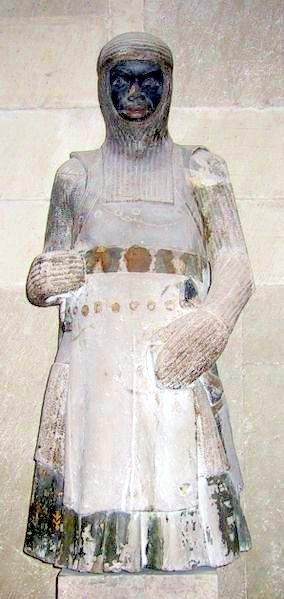
Veneration
Saint Maurice became a patron saint of the German Holy Roman Emperors. In 926, Henry the Fowler (919–936), even ceded the present Swiss canton of Aargau to the abbey, in return for Maurice's lance, sword and spurs. The sword and spurs of Saint Maurice were part of the regalia used at coronations of the Austro-Hungarian emperors until 1916, and among the most important insignia of the imperial throne (although the actual sword dates from the 12th Century). In addition, some of the emperors were anointed before the Altar of Saint Maurice at St. Peter's Basilica. In 929, Henry the Fowler held a royal court gathering (Reichsversammlung) at Magdeburg. At the same time the Mauritius Kloster in honor of Maurice was founded. In 961, Otto I, Holy Roman Emperor, was building and enriching Magdeburg Cathedral, which he intended for his own tomb. To that end,
in the year 961 of the Incarnation and in the 25th year of his reign, in the presence of all of the nobility, on the vigil of Christmas, the body of St. Maurice was conveyed to him at Regensburg along with the bodies of some of the saint's companions and portions of other saints. Having been sent to Magdeburg, these relics were received with great honour by a gathering of the entire populace of the city and of their fellow countrymen. They are still venerated there, to the salvation of the homeland.
Maurice is traditionally depicted in full armor, in Italy emblazoned with a red cross. In folk culture he has become connected with the legend of the Holy Lance, which he is supposed to have carried into battle; his name is engraved on the Holy Lance of Vienna, one of several relics claimed as the spear that pierced Jesus' side on the cross. Saint Maurice gives his name to the town St. Moritz as well as to numerous places called Saint-Maurice in French speaking countries. The Indian Ocean island state of Mauritius was named after Maurice, Prince of Orange, and not directly after Maurice himself.
Over 650 religious foundations dedicated to Saint Maurice can be found in France and other European countries. In Switzerland alone, seven churches or altars in Aargau, six in the Canton of Lucerne, four in the Canton of Solothurn, and one in Appenzell Innerrhoden can be found (in fact, his feast day is a cantonal holiday in Appenzell Innerrhoden).Particularly notable among these are the Church and Abbey of Saint-Maurice-en-Valais, the Church of Saint Moritz in the Engadin, and the Monastery Chapel of Einsiedeln Abbey, where his name continues to be greatly revered. Several orders of chivalry were established in his honor as well, including the Order of the Golden Fleece, Order of Saints Maurice and Lazarus, and the Order of Saint Maurice. Additionally, fifty-two towns and villages in France have been named in his honor.
Maurice was also the patron saint of a Catholic parish and church in the 9th Ward of New Orleans and including part of the town of Arabi in St. Bernard Parish. The church was constructed in 1856, but was devastated by the winds and flood waters of Hurricane Katrina on 29 August 2005; the copper-plated steeple was blown off the building. The church was subsequently deconsecrated in 2008, and the local diocese put it up for sale in 2011. By 2014, a local attorney had purchased the property for a local arts organization, after which the building served as both an arts venue and the worship space for a Baptist church that had been displaced following the hurricane.
On 19 July 1941, Pope Pius XII declared Saint Maurice to be patron Saint of the Italian Army's Alpini (mountain infantry corps). The Alpini have celebrated Maurice's feast every year since then.
The Synaxarium of the Coptic Orthodox Church of Alexandria does not mention Saint Maurice, although there are several Coptic churches named for him.
#african#deep reddish brown skin#north african#coptic#coptic orthodox#alexandria#catholic#roma#roman#gaul#saint maurice#moors#morr#moor#pope#pope pius xii#new orleans#south#south side#baptist#churc#church#egyptian#egypt#kemet#ta meri
217 notes
·
View notes
Photo

Prima Battaglia del Piave: Obice Skoda da 30.5 cm in azione sulle rive del Piave, 1917 Realizzato dalla Skoda, ditta di Pils nell'attuale Repubblica Ceca, viene realizzato nel 1911 costituendo una delle armi d'assedio più potenti e versatili dell'esercito austroungarico, tanto da essere utilizzato anche durante la Seconda Guerra Mondiale. I proietti dal peso notevole di 384 kg sono in grado di penetrare fino a 2 metri di cemento armato e grazie a questa caratteristica alcuni obici di questo tipo, prestati all'esercito tedesco, fanno ottima figura durante l'assedio e la distruzione delle fortezze belghe nei primi mesi della guerra. Con un tipo diverso di ogiva, però, l'obice è efficace anche contro formazioni di fanteria, riuscendo a colpire per un diametro di ben 400 metri dal punto di impatto. L'obice, operato da 15-17 serventi, è in grado di sparare in media un colpo ogni cinque minuti. First Battle of the Piave: An Austro-Hungarian 30.5 cm Skoda heavy howitzer in action on the Piave, 1917. Developed by Skoda in Pils, now part of the Czech Republic, was produced from 1911, constituting one of the most powerful and versatile siege guns of the Austro-Hungarian army. It was also used during the Second World War. The 384 kg heavy shell was able to penetrate up to 2 meters of reinforced concrete - and thanks to this feature, some of this howitzers were loaned to the German Army, having a huge role during the siege and destruction of the Belgian fortresses in the early months of the war. With a lighter shell, the howitzer was also lethal against infantry formations, killing exposed infantry up to 400 m (440 yd) away from the point of impact. The weapon required a crew of 15–17, and could fire 10 to 12 rounds an hour. After firing, it automatically returned to the horizontal loading position. © IWM (Q 60402)
#Grande Guerra#Esercito Austroungarico#Austria#Germania#Belgio#1914#1917#obice#wwe#howitzer#Skoda#Austro-hungarian Army#artillery#artiglieria#imperial war museum#Prima Guerra Mondiale#World War 1#WW1
39 notes
·
View notes